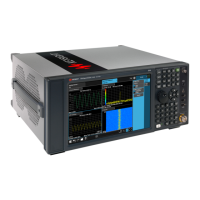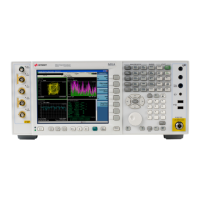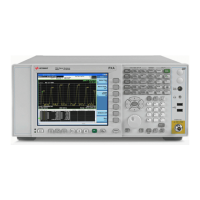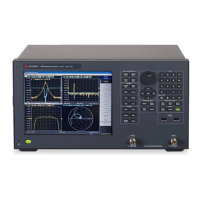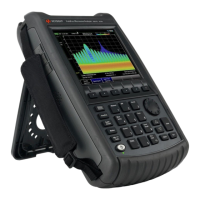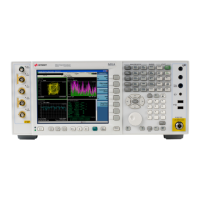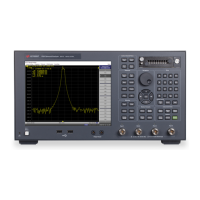4 Remote Interface Reference
146 Keysight 34420A User’s Guide
Using the INITiate and FETCh? Commands
The INITiate and FETCh? commands provide the lowest level of control (with the
most flexibility) of measurement triggering and reading retrieval. Use the INITiate
command after you have configured the meter for the measurement. This changes
the state of the triggering system from the “idle” state to the “wait-for-trigger”
state. Measurements will begin when the specified trigger conditions are satisfied
after the INITiate command is received. The readings are placed in the meter’s
internal memory (up to 1024 readings can be stored). Readings are stored in
memory until you are able to retrieve them.
Use the FETCh? command to transfer the readings from the meter’s internal
memory to the meter’s output buffer where you can read them into your bus
controller.
Configure the meter using the SENSe commands. For voltage measurements on
two channels, you can configure each channel independently by specifying either
SENSe1 or SENSe2. Once configured, use the ROUTe:TERM command to switch
between the input channels.
If you send two query commands without reading the response from the
first, and then attempt to read the second response, you may receive some
data from the first response followed by the complete second response. To
avoid this, do not send a query command without reading the response.
When you cannot avoid this situation, send a device clear before sending the
second query command.
The INIT and FETCh? commands use the meter’s memory. You can defeat the
storing of readings, and still obtain the statistics on the readings using the
DATA:FEED command. See page 166.

